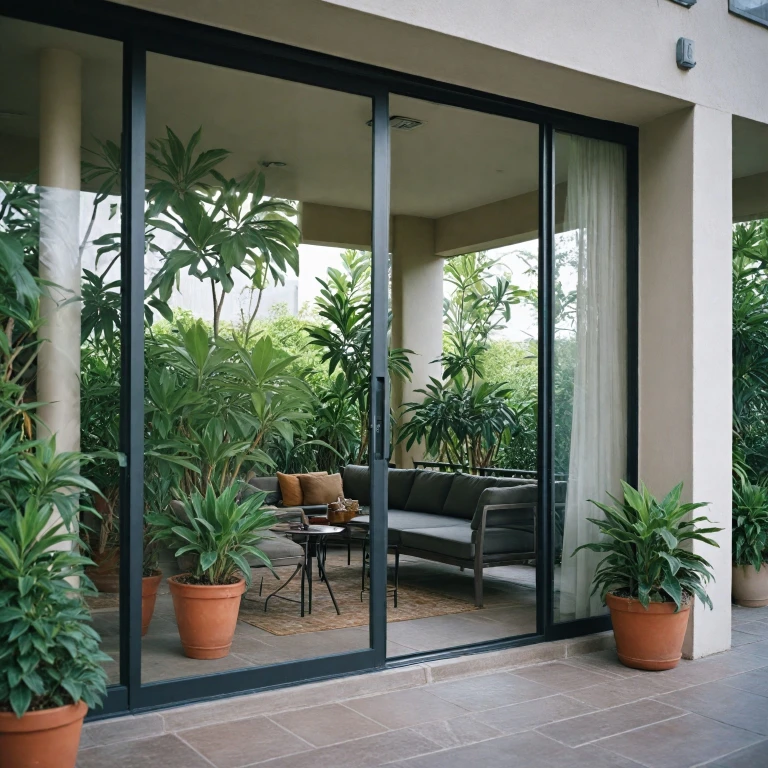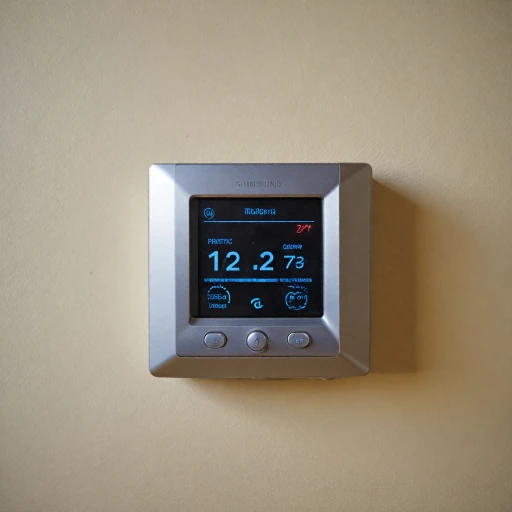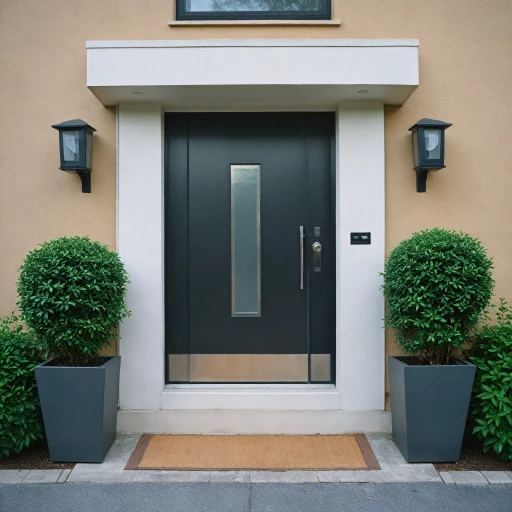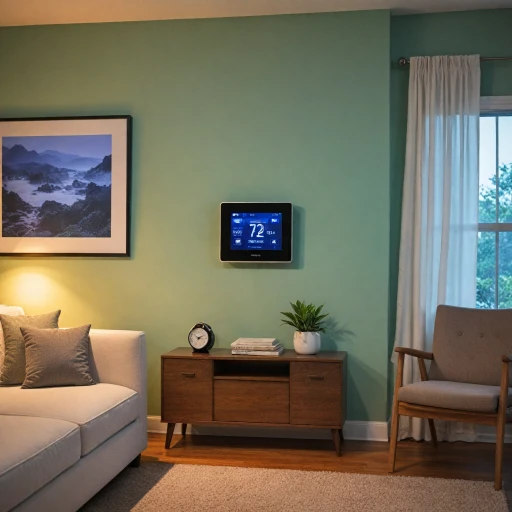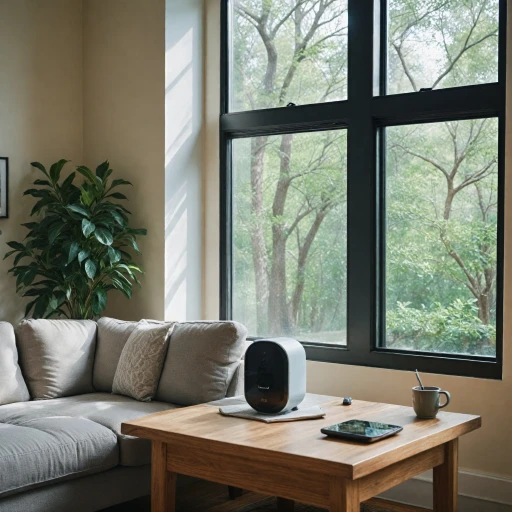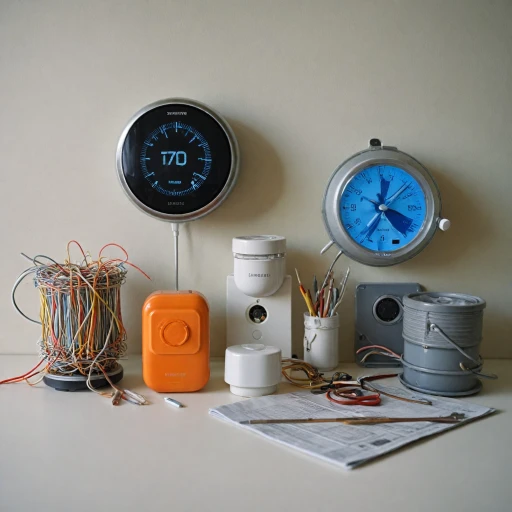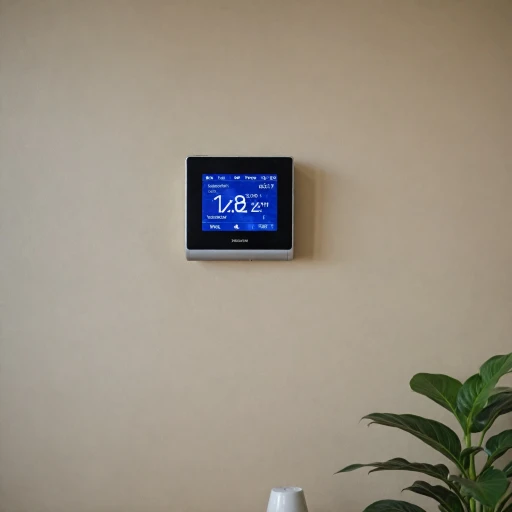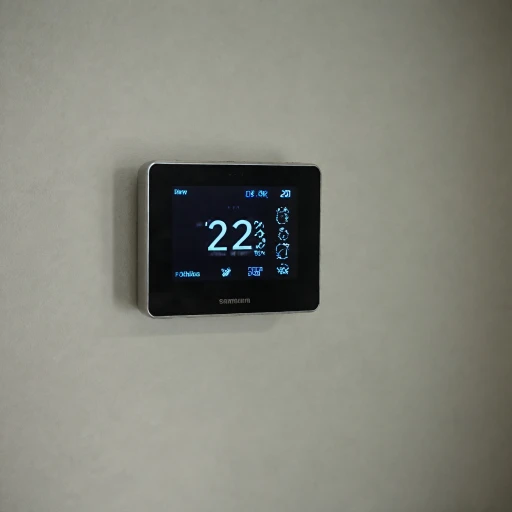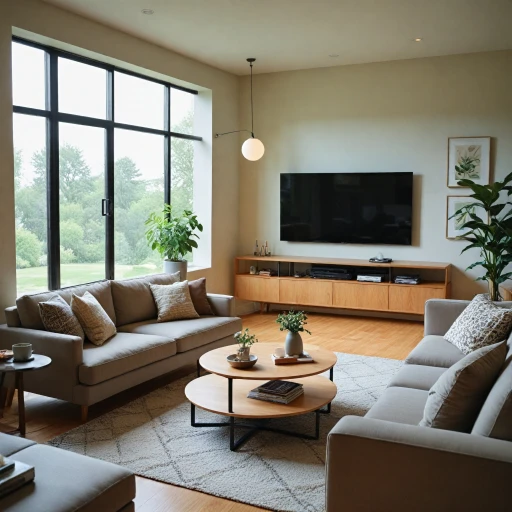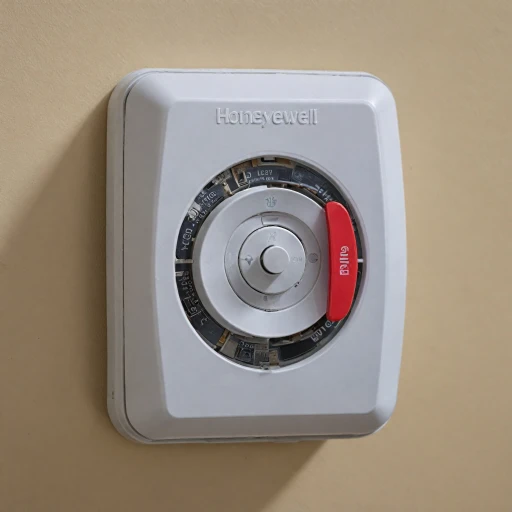
Understanding Smart Thermostats
The Basics of Smart Thermostats
Smart thermostats are revolutionizing home climate control, combining functionality and convenience. These devices are a leap forward from traditional thermostats, offering sophisticated features that can optimize energy use and enhance your home's comfort.
At the core, smart thermostats are internet-connected devices that allow homeowners to control their home’s heating and cooling systems remotely. They use advanced sensors, internet connectivity, and user-friendly interfaces, often accessible through an app, to adjust the temperature based on the homeowner’s preferences and habits.
Key Integrations and Operation
Smart thermostats integrate seamlessly with other smart home devices, such as smart locks and security systems. This integration ensures that your home environment is precisely managed, adding a layer of security and efficiency. For instance, locking the entry door or sliding glass doors can trigger the thermostat to adjust the temperature based on whether the house is occupied or vacant.
Smart thermostats learn from your routine over time, adapting to suit your daily schedule and preferences. With features like keyless entry, you can come home to a perfectly warmed or cooled house, enhancing the overall comfort and security of your home.
Key Features of Smart Thermostats
Exploring Essential Functions and Features
Smart thermostats have revolutionized the way we control climate in our homes. Among the most impactful features are their learning capabilities and remote access control. This is akin to the convenience offered by a Nest thermostat wall plate, which seamlessly integrates into your home setting, combining style and functionality.- Learning Algorithms: Modern smart thermostats are equipped with sophisticated algorithms that learn your schedule and preferences, adjusting the temperature accordingly to optimize for comfort and energy savings. This personalized approach ensures your home is at the ideal temperature at any time of the day.
- Remote Access: Much like smart locks on sliding glass doors, which offer remote access and control via an app, smart thermostats allow users to adjust settings from anywhere. Whether you're in your office or away on a vacation, having control over your home's temperature helps in maintaining comfort and efficiency.
- Integration with Smart Home Systems: Smart thermostats can be integrated with other smart home devices such as smart locks or keyless entry systems. This integration creates a cohesive smart home environment where devices communicate and function seamlessly with each other.
- Energy Monitoring and Insights: Many smart thermostats provide insights into energy usage, helping homeowners understand consumption patterns and identify ways to reduce costs. This proactive monitoring is vital for those looking to maintain an energy-efficient home.
Benefits of Using Smart Thermostats
Advantages of Integrating Smart Thermostats into Your Home
Smart thermostats have revolutionized the way we manage home temperatures, offering a multitude of benefits that can enhance convenience and efficiency in daily life. The ability to control temperature remotely using a mobile app ensures that your home is always at the perfect comfort level upon arrival. This feature is akin to other smart devices, such as a smart lock for your sliding glass door, which can be controlled remotely for increased security and flexibility.- Energy Efficiency: Smart thermostats adapt to your schedule, learning your habits and preferences over time. This adjustment reduces unnecessary heating or cooling, leading to significant energy savings and lower utility bills. The integration of technology is similar to a smart lock's ability to provide keyless entry and access control through fingerprint or PIN code.
- Enhanced Comfort: By learning your preferred temperature settings, a smart thermostat can automatically adjust the climate in your home. This is especially valuable during peak summer or winter months when consistent indoor climate control is crucial for comfort.
- Remote Access: The ability to control your thermostat remotely through an app allows you to adjust temperature settings on the go. This is akin to the smart door lock feature, allowing you to manage access to your home from anywhere. This ease of access ensures your home remains secure and comfortable, even when you're not around.
- Smart Home Integration: Smart thermostats can be part of a broader network of smart home devices, seamlessly integrating with other products like smart lights and locks. This connectivity simplifies home management, whether it's setting up a personalized cooling schedule or enhancing security through a keypad door lock for your patio.
- Environmental Impact: Reducing energy consumption not only benefits your wallet but also contributes to a smaller carbon footprint. A smart thermostat can be a step forward in creating a more sustainable home environment.
Challenges in Smart Thermostat Adoption
What to Consider When Adopting Smart Thermostats
When venturing into the smart home ecosystem with a focus on energy efficiency, a smart thermostat is undoubtedly a central component. However, the journey to adopting this cutting-edge technology is not without its hurdles. Let's explore some challenges you may face.Integration with Existing Systems
Ensuring compatibility with your existing HVAC system can be a challenge. You might find that your system requires regular maintenance to function seamlessly with a smart thermostat. It is crucial to confirm compatibility or consider an upgrade to avoid any technical pitfalls.Initial Investment
The initial price can be a barrier for many homeowners. While the cost can vary based on the product and its features, investing in a smart thermostat can lead to long-term savings on energy bills. Consider this initial expenditure as a gateway to future financial benefits.Data Privacy Concerns
With the rise of connected devices, data security is a paramount concern. Smart thermostats often collect usage data to optimize their performance. It's vital to review the privacy policies to understand how your data is being used and ensure that your security remains uncompromised.Usability and Complexity
Despite their advanced capabilities, some smart thermostats can be challenging to operate. Homeowners may find certain products to have complex user interfaces or lagging app experiences. It is essential to select a user-friendly model that suits your technical comfort level.Smart Home Ecosystem Compatibility
Finally, consider how well your chosen thermostat works within your existing smart home ecosystem. It's important to ensure that your thermostat smoothly integrates with other devices such as smart locks or bedrooms equipped with sliding glass doors and does not disrupt the functionality of other systems like keyless entry mechanisms using a lock fingerprint or matte black keypad on your patio doors. When these challenges are addressed thoughtfully, transitioning to a smart thermostat can be a rewarding step toward a more efficient and convenient home environment. Maintaining open communication with your smart thermostat’s customer support can alleviate setup and ongoing usage concerns, ensuring a smooth transition into the world of home automation.Choosing the Right Smart Thermostat
Choosing the Right Smart Thermostat for Your Home
Selecting the ideal smart thermostat involves several thoughtful considerations. Here are some essential factors to keep in mind while making your choice:- Compatibility with Existing Systems: Ensure the smart thermostat you choose is compatible with your current HVAC system. This is crucial as not all products work seamlessly with every system.
- Ease of Use: Opt for a thermostat that provides intuitive controls. Keyless entry, access through an app, or a user-friendly keypad can greatly enhance the experience.
- Advanced Features: Consider features such as voice control, learning capabilities, and integration with other smart home devices like smart locks on sliding doors. These can offer convenience and enhance your home's security.
- Energy Efficiency: Investing in a thermostat that adjusts intelligently to your usage patterns can help cut down on energy costs over time. A model that provides comprehensive reports can aid in understanding your usage and making adjustments.
- Price Considerations: While the price is a factor, balance it with the feature set. Often, spending slightly more on a quality product can result in long-term savings and satisfaction.
- Aesthetic Appeal: Modern smart thermostats are not just functional; they also add to your home's decor. Options in satin nickel or matte black finishes can complement the design of your entry door or patio area.
- Security Features: Evaluate thermostats that offer security features like lock fingerprint options or pin code entry to prevent unauthorized access.
- Regular Maintenance and Support: Look for products that offer regular updates and have strong customer support. This can ensure your thermostat remains efficient and secure over time.
Future Trends in Smart Thermostat Technology
Emerging Trends and Expectations for Smart Thermostats
As technology continues to evolve, smart thermostats are poised to become even more integrated with our daily routines, enhancing home comfort and security. Here are some key trends to watch:- Integration with Smart Locks and Security Systems: There is a growing interest in integrating smart thermostats with door lock systems, particularly for sliding and glass doors. This integration could enhance security by allowing homeowners to adjust settings based on whether doors are locked or unlocked, providing an added layer of access control.
- Improved User Interfaces and Apps: Future smart thermostats are expected to offer more intuitive apps and keypad interfaces, providing users with seamless control over their home environments at any time. This could involve more user-friendly designs for entry and app interfaces, resembling popular keyless entry door lock systems.
- Advancements in Keyless and Touchless Technology: As seen with door locks equipped with fingerprint recognition, smart thermostats may soon offer touchless controls. Imagine setting your home temperature with a simple swipe or fingerprint—no numbers or codes needed.
- Sustainable and Energy-Efficient Features: With climate change concerns at the forefront, upcoming models are likely to emphasize greater energy efficiency. Smart thermostats could incorporate real-time energy usage displays and suggestions for optimizing both comfort and cost.
- Customizable Aesthetic Options: Just like satin nickel and matte black are trending finishes for door hardware, smart thermostats may offer customizable designs to match home decor. This trend reflects the growing consumer interest in personalized home technology.
- Advanced Learning Capabilities: As seen in current products, there's a push towards thermostats that learn user habits. These systems may learn from routine activities, such as frequent patio door use or specific times when sliding doors are locked, to adjust temperatures more effectively.
